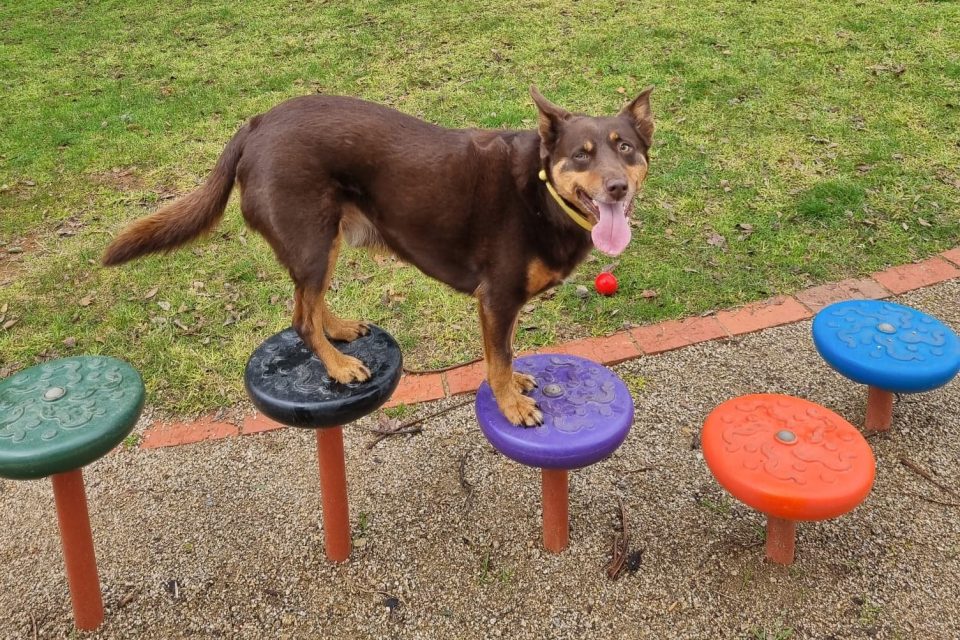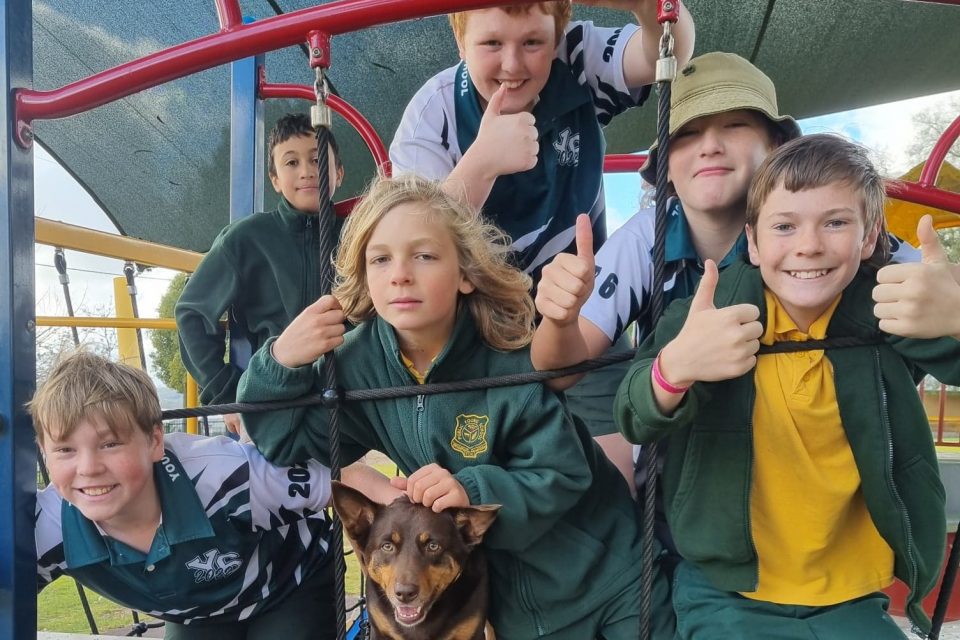







As the 2022 school year draws to a close, the students of Young Public School are steeling themselves for the five-week summer holiday period without one of their beloved staff members.
Bob the Dog is, without doubt, the most popular identity at the school, joining the team first as a casual on weekends and holidays, before being secured full-time three years ago.
Owner Jane Caldow, the school’s administrative manager, said she would occasionally bring Bob, a red kelpie, into school when working overtime on weekends and school holidays.
“Bob’s presence prompted my principal, Edwina Wymer to suggest we look at the idea of bringing him on as staff,” she explained.
Subsequent testing considered his character and ability to interact with students, which he passed with flying colours and now wanders the halls happy as a dog with two tails.
When he’s not working, of course.
Bob’s three-hour day begins with a meet and greet at the school gates as students arrive, with special attention given to those who might be feeling trepidous.
“Getting a handshake from Bob can make new students feel a sense of belonging in a new school,” says Jane.
By 9:30 am it’s time for Bob to rest, but students having a rough day can sit and hold hands/paws at any time. Others simply sit and read to him.
He accommodates five, 15- to 20-minute appointments each day – but there’s also the half-hour rest period at 11 am where Bob retreats to his bed in Jane’s office, away from the stimulus of the school.
Outdoors he runs, walks, chases the ball, races students down the slides and performs a variety of other tricks in the playground, including beam and tunnel walks and along the wobbly bridge.
And he has certain tree stumps he sits on, where he knows to sit and hold hands when he is on one.
He’s also learned to sit on stools of different colours on Jane’s command.
She says Bob does a variety of things to meet different needs of different students in the school.
“Where we have students who are very upset and need something distracting, I get them to slowly dribble the ball around the perimeter of the auditorium and concentrate on keeping it away from Bob,” she said.
“It doesn’t take long before their minds are so fixed on keeping the ball away from Bob they forget about what they were upset about in the first place.”
His presence has improved student attendance, encouraged shy students to be more open, strengthened confidence, forged and cemented friendships and encouraged sharing.
“Students with self-esteem issues who have regular time can choose a friend to accompany them,” Jane said. “That person may not be someone they normally hang out with but nice for them to demonstrate their personalities in a comfortable one-on-one environment.”
He instills a sense of calm on short walks outside and bridges the gap for those students coping with personal issues – for instance, a death in the family or a family breakup.
As well as helping students with their emotional needs, Jane says she feels Bob and other animals in schools are also helping other animals in the future.
“I would like to think children from backgrounds where dogs and other pets are easily disposed of or treated poorly will remember their time with Bob and how we care for him when they move into adulthood with their own families,” she said. “We hope we can change some mindsets.”
From Bob’s perspective – like any new employee in a new workplace – there was a cautious start, but now – says Jane – he’s confident and the school is his domain.
“The school yard is his second home,” she said.
“On the very odd occasion that I need to leave him home he looks at me as though he’s done something wrong as he tries to beat me out the door,” Jane said. “He loves his job and knows the routine, even what the bells and alarms mean.”
“When he hears the bell after recess and I am not moving from my chair busy with something in the office, he nudges me to let me know we need to go to our next job.”
Jane’s advice to schools considering introducing a support animal is that the dog should not be bought.
“He or she must be a part of a loving family already,” she said, “and more ideal is if the handler was a school learning support officer (teacher’s aide).”
And no matter how bombproof you think your dog is, Jane suggests people be very mindful that school is very different for them.
“You have a duty of care to your dog, as well as the students,” she said. “We visit each class at the beginning of the year and remind the children about how to pat a dog.”
In addition to this each classroom displays the poster – “A Message from Bob: How to Greet a Dog”.
Jane also suggests getting a dog assessment from professional dog trainers like The Dog Lady, Debi Coleman, from Orange and paying another school a visit to see how it works.
“We are more than happy for anyone interested in spending a morning with us to see what we do,” Jane said.











